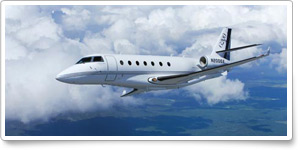| ||||||
| Electromagnetic catapult tested |
| |||||
| Sponsored by: | ||||||
FEATUREDRare Twin Mustangs preparing for flight
|
GA NEWS | |||||||||||||||||||||||||||||||||||||||||||||||||||||
| | Record the Correct ATIS Information Every Time With iATIS™—Now Only $2.99 iATIS™, a revolutionary new app that allows the user to input ATIS information and see a graphic display of airport conditions, including runway, crosswind component and weather information. Available NOW on iTunes … search iATIS, or through www.iATISapp.com. Available soon for Android. No mobile device? Visit www.ATISWHEEL.com for a kneeboard copy. 5% of proceeds will be donated to the Injured Marine Semper Fi Fund. |
![]()
AOPA Live evolves into powerful online video platform
 With its first full year of live streaming broadcasts under its belt, AOPA Live ® has evolved into a powerful platform providing pilots with virtual access to aviation events and aircraft—anytime, anywhere. Pilots have watched thousands of hours of videos this year ranging from technique tips to news interviews to aircraft reviews. AOPA Live brought Sun ‘n Fun Fly-In in Lakeland, Fla., EAA AirVenture in Oshkosh, Wis., and AOPA Aviation Summit in Long Beach, Calif., right to pilots’ computers with real-time streaming video. Read more >>
With its first full year of live streaming broadcasts under its belt, AOPA Live ® has evolved into a powerful platform providing pilots with virtual access to aviation events and aircraft—anytime, anywhere. Pilots have watched thousands of hours of videos this year ranging from technique tips to news interviews to aircraft reviews. AOPA Live brought Sun ‘n Fun Fly-In in Lakeland, Fla., EAA AirVenture in Oshkosh, Wis., and AOPA Aviation Summit in Long Beach, Calif., right to pilots’ computers with real-time streaming video. Read more >>
Most Popular AOPALive videos
Spin mythsCrosswind landingsBird strike!Police arrest John and Martha KingGarmin G3X | New taxi proceduresAvidyne DFC90 autopilotPiperJet AltaireSean D. TuckerJet sailplane pilot Bob Carlton |
|---|
For daily news updates, see AOPA Online.
| | Your IFR rating in 10 days at your location, IFR finish-up in as little as 3 days! Professional teachers and our own curriculum. 30 years experience. G1000 and Avidyne Entegra IFR specialists. Put it on your calendar NOW. 800-435-9437, www.iflyifr.com |
Safety & Proficiency
 Accident Case Study highlights dangers of icing
Accident Case Study highlights dangers of icing
Of all the weather hazards we face as pilots, ice is one of the most treacherous. Accident Case Study: Airframe Icing puts you in the cockpit of a Cirrus SR22 as its pilot struggles to escape unforecast ice high above the Sierra Nevada. It’s a gripping look at the perils that sometimes lurk in the clouds and a lesson in the importance of decisive action for pilots who venture into them unprepared. Listen to the story >>
The cold truth
There have been numerous avoidable accidents on takeoff as a result of wing contamination by snow, frost, and ice. A few simple steps during preflight could have easily prevented these accidents. So what do you look for? Download the Air Safety Institute’s Cold Facts: Wing Contamination Safety Brief for life-saving tips. The two-page safety brief is a quick but important read. Stow it in your flight bag during cold season operations.
Do you fly SPIFR?
What’s SPIFR? Find out when you take the Air Safety Institute’s Single Pilot IFR (SPIFR) course. Flying solo in the IFR system can be a challenge for even the most experienced pilots. This interactive course asks the right questions to coach you before launching SPIFR. You’ll learn about risks and how to manage workload with no co-pilot aboard. But most important—it helps you recognize how to stay safe. This course qualifies for AOPA Accident Forgiveness and the FAA Wings program. Check it out >>
 Ageless wonder
Ageless wonder
Wanted: Mature adult to take flying lessons. No aviation experience required. Must be able to meet basic medical standards, and be motivated to pursue a lively course of ground study and flight lessons culminating in a pilot certificate. Applicant can expect to learn multiple fascinating subjects and skills, make friends, and enjoy an unmatched sense of accomplishment. If those words sound unlikely as an ad for student pilot recruitment, think again. Read more >>
 Air Safety eJournal: The ‘Alpha’ measurement
Air Safety eJournal: The ‘Alpha’ measurement
Sometimes an accident hits so close to home it causes pilots to question the fundamentals. “A friend lost some business acquaintances landing a Bonanza at his private strip when the 5,000-hour pilot inexplicably stalled and they spun in. He began to wonder if an angle of attack (AOA or Alpha) indicator would have helped and why they weren’t installed on many more aircraft. I’ve wondered myself,” writes AOPA Foundation President Bruce Landsberg. Read more >>
Flight Instructor Refresher Clinics | Air Safety Institute Safety Seminars | |||||||||
For a complete schedule, see AOPA Online. Can’t make it in person? Sign up for the CFI Refresher Online. |
Topics vary—for details and a complete schedule, see AOPA Online. | |||||||||
ADVOCACY
Coast-to-coast successes capped 2010 at state level
AOPA wound up an active year in the halls of state government from Florida to Washington state by savoring victories on issues ranging from defeating onerous aircraft taxes to keeping dangerous structures away from airports and aircraft. Efforts to work with state government bought more time for reforming regulatory proposals, thus sparing flight schools and students from crippling bureaucratic burdens in California, and ending those concerns in Arizona. AOPA, allied with regional pilots associations and national and state aviation associations, went to work to counter a variety of aviation tax initiatives—in each case pointing out the economic harm that could arise from a state’s attempts to impose onerous levies on pilots and aircraft. Read more >>
| | Save Up to $3,500 on the Garmin G3X™ Change your perspective with Garmin’s G3X flight display system for experimental/kit planes. Purchase a qualifying G3X system before the end of the year and you could earn up to $3,500 via mail-in rebate. Learn more. |
After lead: Searching for the new avgas
The effort to switch the general aviation fleet to a lead-free fuel is a marathon, not a sprint, AOPA is reminding pilots and aircraft owners. And, the association encourages pilots to keep in mind the project’s overarching threefold mission. First, the effort must ensure that a continuous supply of the existing aviation fuel is available, assuring the utility of the piston-engine fleet. Second, a process must be established that, working with the FAA, develops and implements a comprehensive program to facilitate the qualification of an unleaded avgas replacement for 100LL. Finally, a timeline must be established that allows adequate time for transitioning to an unleaded solution. In 2011, AOPA will intensify its outreach to pilots, explaining how fuel supplies will be secured in the short and long term. The association also will work to help pilots find the information their specific needs require for future planning. Read more >>
 Defining the challenge
Defining the challenge
Just as nonpilots are surprised to learn that aviation fuel still contains tetraethyl lead (TEL) long after it was removed from auto fuels, some pilots are just now learning that lead will be gone from avgas one day in the not-too-distant future. They all have questions—and, for now, the answers are different, depending on what you fly. Read more >>
Why is this happening now?
The Environmental Protection Agency’s advanced notice of proposed rulemaking that was published last spring (filed in response to a petition from an environmental group) made many in the industry realize that the beginning of the end was at hand for 100LL even though work exploring unleaded fuels has been ongoing. Read more >>
Stay informed
Make sure you are up to date on the latest research and information on the progress of the search for an unleaded aviation fuel by signing up for AOPA ePilot Special Report: Getting the Lead Out . AOPA will periodically publish the special report to update those who have opted to receive news about the developments on this issue. Check out the archives and sign up today.
| | AOPA Aircraft Financing Program offers NEW lower rates Our goal is to get pilots into the aircraft of their dreams. To help make aircraft ownership more attainable, we just lowered our rates to make monthly payments more affordable. For more information, or to have a representative call you to discuss financing, go to www.aopa.org/loans. |
Member Benefits
Are your insurance policies overdue for their annual inspection?
As another year comes to a close, it’s the perfect time to review your insurance policies. A lot can happen in a year, and your coverage needs may have changed. You may even find that it’s time to shop around for better rates. If so, as a pilot, AOPA should be the first stop for you. AOPA offers great rates on term life, accidental death and dismemberment, aircraft, auto, and motorcycle insurance. And since they are AOPA certified, you won’t have to pay higher rates just for being a pilot. Make sure when you take your first flight of 2011 you can relax and enjoy the flight knowing that you’re covered by AOPA’s Insurance Services.
| | FREE Video Tip! — Courses for Beginner to Pro! Click for a Free Video Training Tip and find a course to achieve your next goal, or to make your flying safer and more rewarding. Not sure? Call us at 800-854-1001 and talk to one of our pilot training advisors. |
AOPA Career Opportunities
Ever dream of turning your passion for aviation into a career? We’re looking for a vice president of new product development and interactive marketing, business analyst, financial analyst, and IT project architect. To learn more about other AOPA career opportunities, visit AOPA Online.
Community
Picture PerfectAOPA’s online photo gallery allows you to upload your own aviation photography as well as view, rate, and comment on others’ photos. Your favorite aviation images from AOPA Pilot are still available online through this new gallery. Take a look, and submit your own photos! | Would you "dive and drive" on the approach? Check out this forum entry and decide whether you would shoot an instrument approach based on this METAR: “KMCI 272053Z 24011KT 7SM OVC005 M07/M09 A3030.” Join the discussion >>
| |
Engage in AviationCheck out user-submitted events from your region. To include an event or to search all events in the calendar, visit AOPA Online. AOPA does not endorse the events listed below, nor have ePilot editors edited the submissions. AOPA assumes no responsibility for events listed. | ||
| |
QUIZ ME!Here’s a question asked by an AOPA member who contacted our aviation services staff through the AOPA Pilot Information Center. Test your knowledge.
Question: On a recent IFR flight I experienced loss of RAIM capability on the GPS. I promptly notified ATC, and they requested a new equipment code. My aircraft has DME and a Mode C transponder, but I couldn’t remember the code! Where can I find that information?
Answer: In your case, the equipment code would have been slant alpha (/A). Refer to table 5-1-2 in the Aeronautical Information Manual for other aircraft equipment suffixes. Got a question for our aviation services staff? The AOPA Pilot Information Center is a service available to all members as part of the annual dues. Call 800/USA-AOPA (800/872-2672), or e-mail to [email protected]. | |
| |
| | ||||
| ePilot Editor: Sarah Brown | Contributors: Alyssa Miller Jill W. Tallman Warren Morningstar Alton K. Marsh | | Production Team: William Rockenbaugh Lezlie Ramsey Melissa Whitehouse Mitch Mitchell | Advertise in ePilot: |
| Member Tools: Send feedback | Update member profile/e-mail | Unsubscribe | ePilot Archive © Aircraft Owners and Pilots Association | 421 Aviation Way Frederick, MD 21701 | Phone 800/USA-AOPA | Fax 301/695-2375 | ||||










